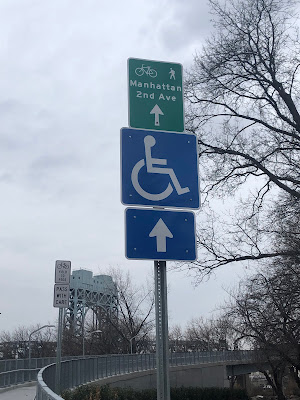In earlier posts, I mentioned that I worked in bicycle shops, as a mechanic, assembler and salesperson, on and off from the mid-1970s until the mid-1990s. For about four years, in total, it was my “day job;” the rest of the time, I worked during school breaks or “in between jobs” (translation: when I was otherwise unemployed).
Although I mostly enjoyed my experiences, they are also the reason why I didn’t open a shop of my own when I had the opportunity. Oh, most the customer interactions were pleasant: People are usually in a good mood when they’re buying bikes or accessories and happy when you can fix whatever was ailing them (the bikes, I mean). But the business side of it is another story.
One shop in which I worked had, like most good shops, a mechanic (or, at least someone who understands quality bikes) as a proprietor. His “silent partner,” however, was cut from a different jersey material. He had been a customer at a shop where the head honcho worked and was duly impressed with his skills and ambition. So, he fronted the money the shop’s “owner “ needed to open.
He was a nice enough guy. (Full disclosure: He did a couple of fairly significant favors for me.) But he made most of his money on Wall Street because, as he said, he was “good with numbers” and, as he admitted, “had a bit of luck sometimes.”
For all of his business and actuarial acumen, he simply could not understand why, as busy as the shop was, the return on his investment was so small. A few years after I last worked in that shop, he “pulled the plug” and the mechanic/proprietor’s dream didn’t last much longer.
I would have been in a similar situation had I taken up an offer of “seed money” to start my own shop. The person who offered it wasn’t even a cyclist, let alone someone who understood the bike business. She simply would not believe that the wholesale price of a $700 bike (which, at that time, was “upper middle class”) was around $500. I didn’t even get to explain to her that a shop would have to pay someone like me to assemble it—and rent, utilities and other expenses that are part of running a business.
I thought about that experience a while back, when I came across this article: “Why big outsider companies (almost) always fail in the bike business.”
Among other things, automotive, tech and other capital-intensive companies don’t understand dynamics like the one I described, or much else about the bike business. For one thing, it’s composed of much smaller companies and dealers than, say, BMW. Speaking of which, cycling doesn’t have “prestige” brands like the aforementioned automaker or Cadillac—or “crossover “ names like Nike that straddle the line between sports attire and fashion. While some bike companies offer nothing but junk and a few make small numbers of high-end and custom bikes, most offer a range of models at different price points. So when someone tells me, for example, that a friend has a Cannondale or Trek, I ask, “Which model?”
Also, as the article points out, customer’s preferences in one business don’t necessarily translate into bicycles. As an example, people interested in “power” sports or vehicles (like speed boats) aren’t necessarily interested in bikes, or even e-bikes.
So why am I discussing the “weirdness” of the bicycle industry today? Well, I’ll bring you back to the “silent”’ partner of the shop where I worked and my would-have-been partner, who wouldn’t have been so silent. Those small-to-non-existent profit margins are the reason why you won’t see, comparatively, many bicycles on sale today, Black Friday. And most of the bikes that are marked down are lower-end models: Paradoxically, the more expensive bikes have smaller margins, percentage-wise.
So, if you are looking for bike-related bargains today, you’re more likely to find them among accessories and apparel. The latter is likely to consist of “leftovers “ (I couldn’t resist a Thanksgiving pun!), as retailers are looking to move this (or last) year’s merchandise to make way for new stuff. So, you might not find the size you need or the colors and designs you prefer.


























